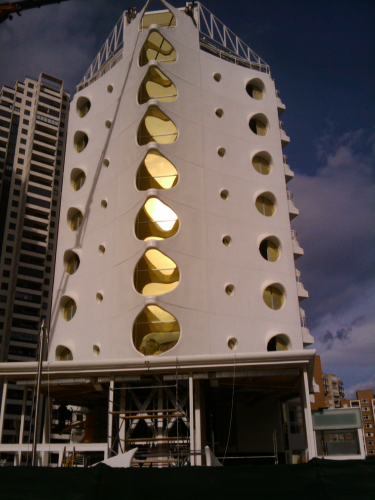
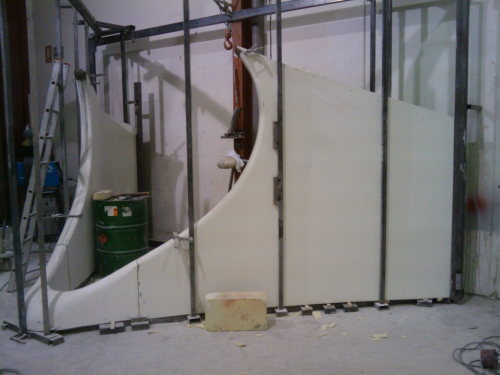
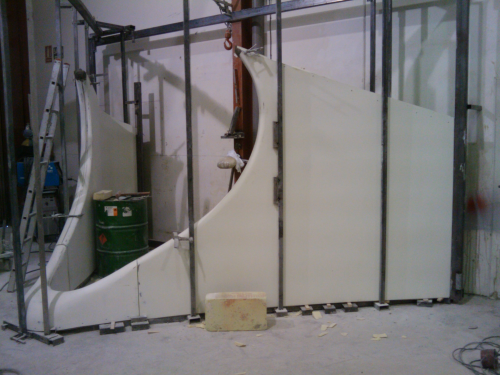
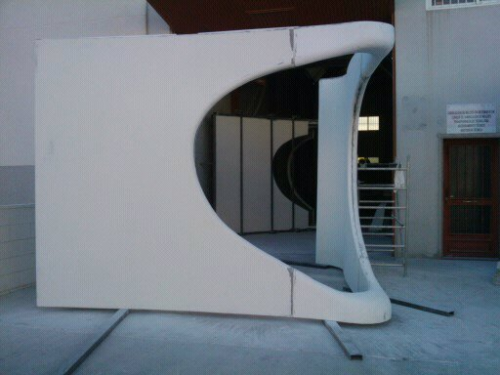
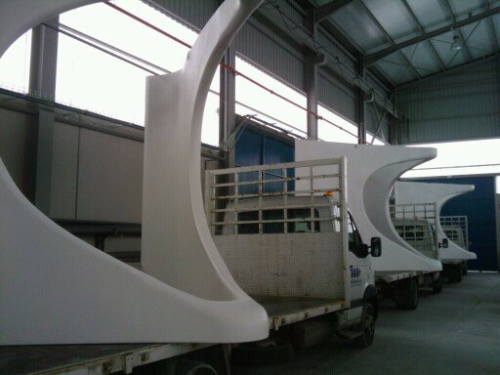
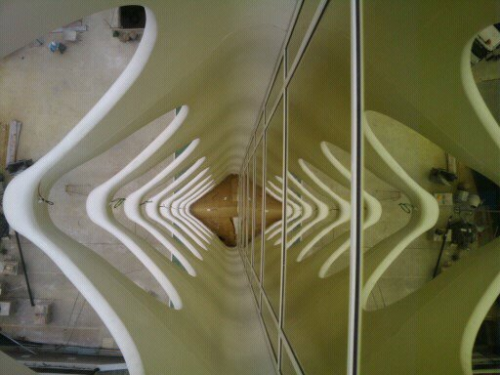
The new look for the hotel was designed by the Spanish architect Vicente Peidró. The most challenging aspect of the design was the production of the nine large curved triangular sections for the centre of the facade. It proved most cost effective to produce these by moulding eight individual 5 mm thick GRP parts and bonding them together. A metal clamping frame, designed by Miraplas, held the parts in position during bonding.
All the GRP parts were produced using an isophthalic polyester resin, three layers of glass matting and an isophthalic gel-coat. Once moulded, the eight separate GRP parts for each triangular section were accurately positioned in the metal clamping frame and then bonded together using Scott Bader's Crystic Crestomer 1152PA structural adhesive applied using a pneumatic gun.
The steel frames used to mechanically fix the GRP facade sections to vertical steel pillars on the hotel exterior wall were also bonded into place with Crystic Crestomer 1152PA. In some confined areas, hand guns with cartridges of Crestomer Advantage 30 were used.
Scott Bader reports that its Crystic Crestomer adhesives have been successfully used in a variety of building and construction applications, such as for cladding panels on bridges, as well as in many composite marine applications in boat hulls and decks. Reliable long term structural bonding of composite and metal substrates is achievable, provided the recommended surface preparation is carried out prior to bonding.
Using a structural adhesive for this type of application also helps to reduce the overall weight of the final GRP section. Bonding also offers benefits in production efficiency, particularly by using pneumatic application guns where possible for larger sections, in preference to cartridge hand guns.
Closed moulding
The facade sections were manufactured in the Miraplas factory in Monforte del Cid, close to Alicante. The parts were primarily produced using the resin transfer moulding (RTM) Light closed moulding process, plus some by hand lay-up. Over the last 18 months, with the technical assistance of Mr Jose Manuel Bey Garcia, an independent RTM consultant and technical advisor on the hotel project, Miraplas has expanded its manufacturing capabilities in RTM closed moulding.
Miraplas has traditionally specialised in manufacturing large GRP tanks and related parts used in waste water treatment, water purification and desalination plants. The company now has the expertise to fabricate a much wider variety of large complex GRP shapes for industrial, building and construction applications, such as doors, tank covers, curved cladding, cylindrical shaped parts and wind turbine blades.






